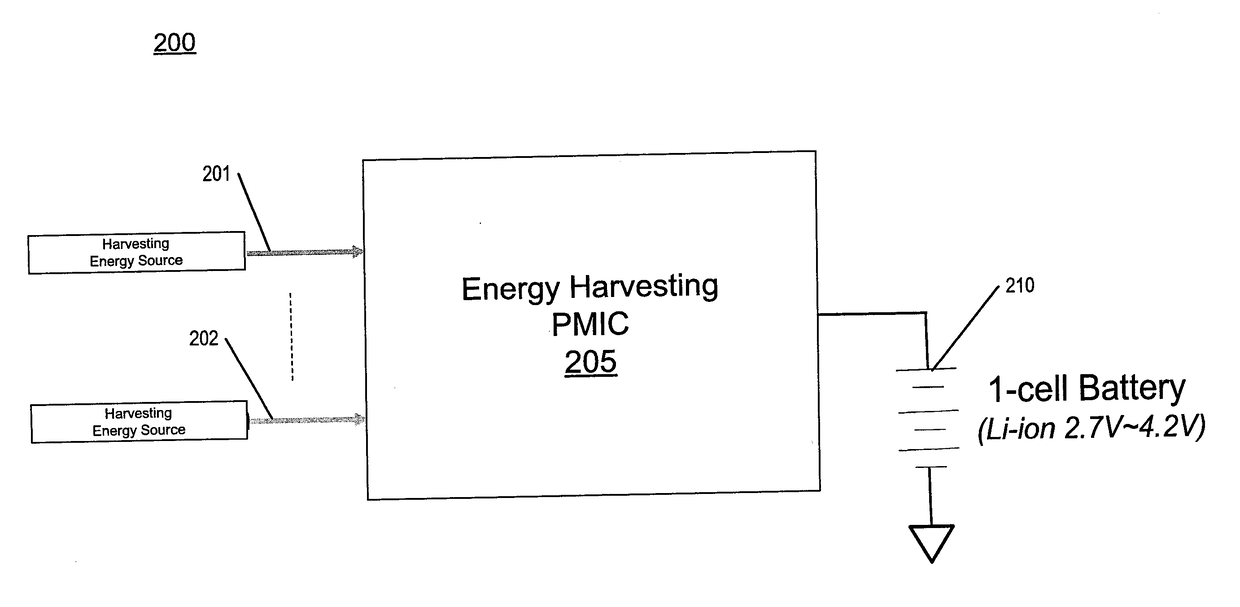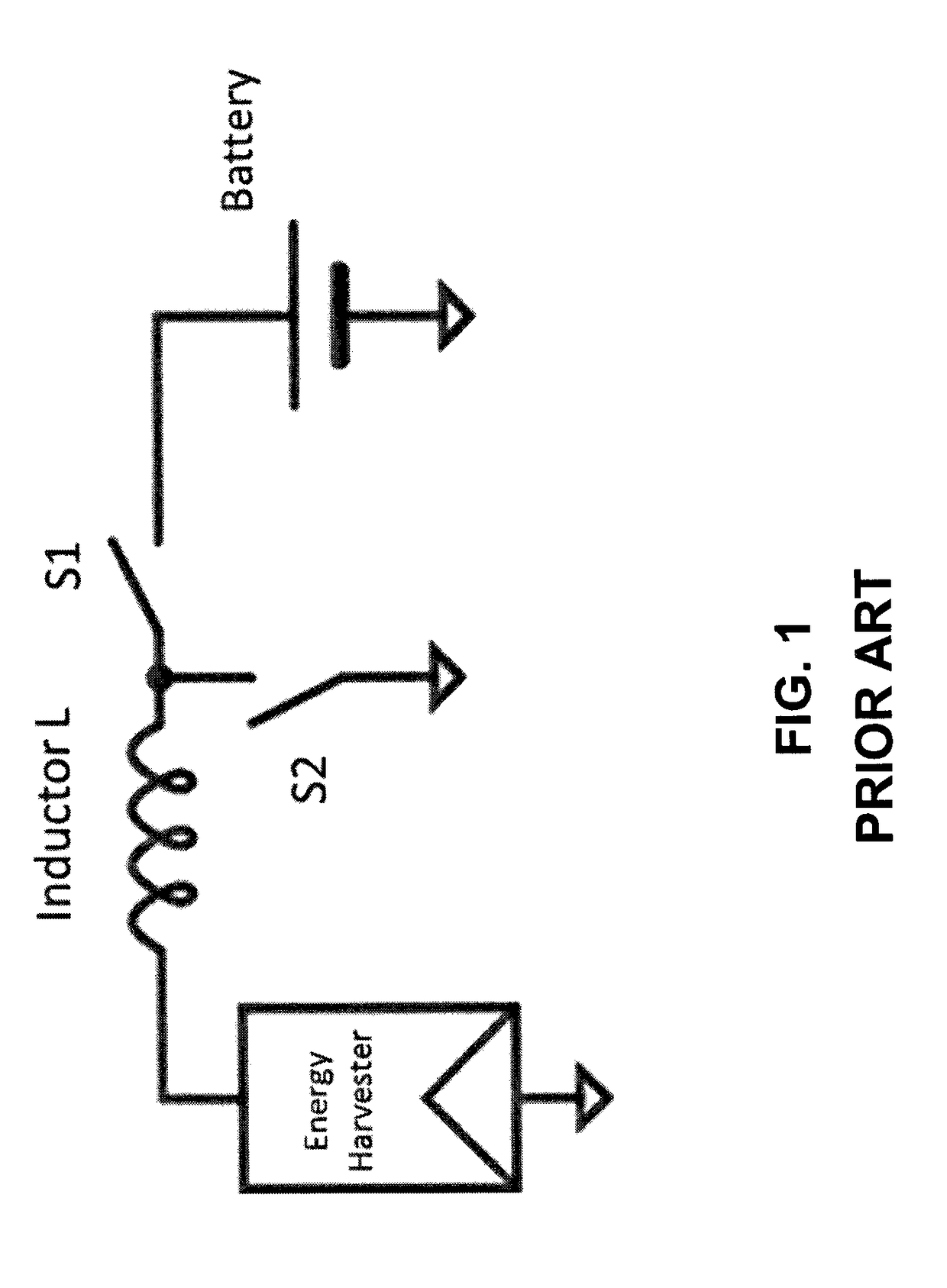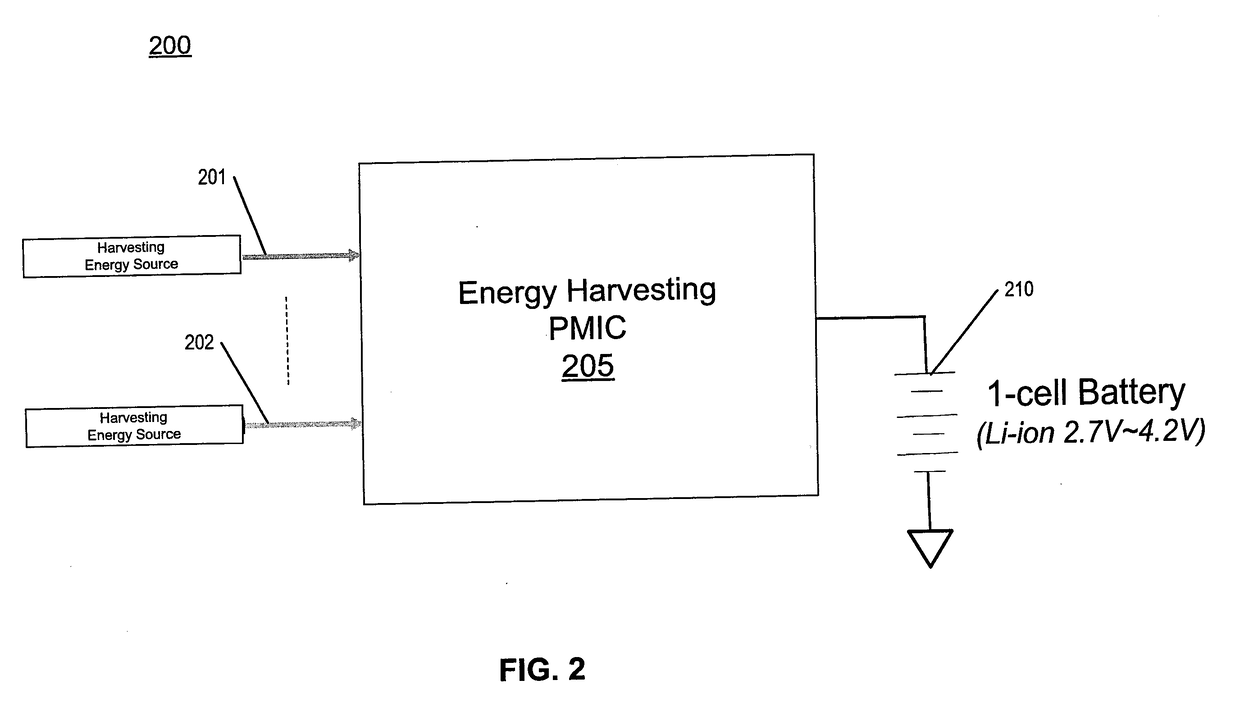Power architecture and management scheme for IoT applications
a technology of power architecture and management scheme, applied in the field of integrated circuits, can solve the problems of increasing the difficulty of becoming a power source, increasing the difficulty of powering sensor nodes and extending battery life, and changing the energy that can most easily be harvested
- Summary
- Abstract
- Description
- Claims
- Application Information
AI Technical Summary
Benefits of technology
Problems solved by technology
Method used
Image
Examples
Embodiment Construction
[0014]The following description describes methods and apparatus for a power management integrated circuit (PMIC) for receiving energy from multiple energy harvesting sources. Specifically, methods and apparatus for an energy harvesting PMIC with a two-stage hybrid switching topology. The first stage of the energy harvesting PMIC includes a boost converter that receives multiple input power supplies to generate an intermediate voltage, where the boost converter has multiple input terminals coupled to the multiple input power supplies. The second stage of the energy harvesting PMIC includes a switched capacitor charge pump that receives the intermediate voltage to generate a second power supply, where the second power supply is greater than the intermediate voltage and can power a load and charge a battery directly. The energy harvesting PMIC and these techniques described herein also advantageously address the issue on power management for multi-source energy harvesting and increase ...
PUM
 Login to View More
Login to View More Abstract
Description
Claims
Application Information
 Login to View More
Login to View More - R&D
- Intellectual Property
- Life Sciences
- Materials
- Tech Scout
- Unparalleled Data Quality
- Higher Quality Content
- 60% Fewer Hallucinations
Browse by: Latest US Patents, China's latest patents, Technical Efficacy Thesaurus, Application Domain, Technology Topic, Popular Technical Reports.
© 2025 PatSnap. All rights reserved.Legal|Privacy policy|Modern Slavery Act Transparency Statement|Sitemap|About US| Contact US: help@patsnap.com



